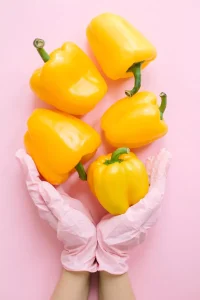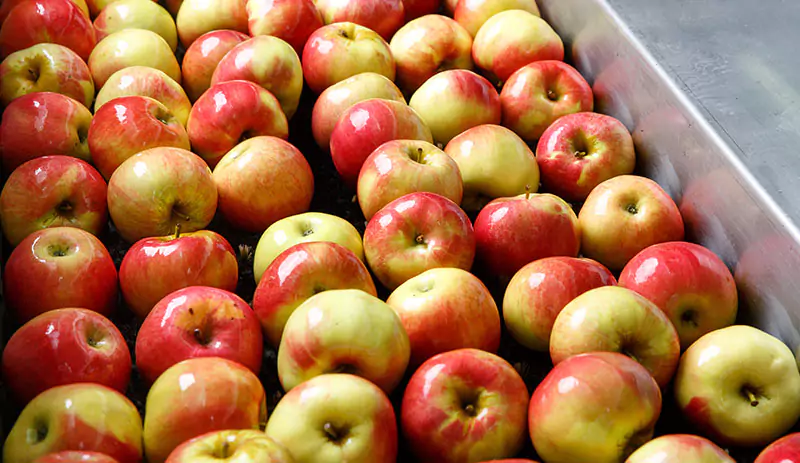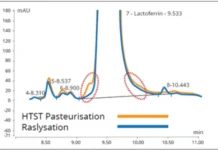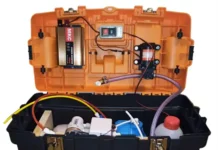IUVA Food and Beverage Safety Working Group
Dr. Danny Bayliss, new technology lead, Campden BRI
Dr. Tatiana Koutchma, Agriculture and Agrifood Canada, Guelph, Ontario
Peter E. Gordon, manager, LiTeProducts LLC
 Food contact surfaces comprise all materials that food products may interact with during the production, processing and packaging of end products. These surfaces are typically made of stainless steel or various types of approved plastic. However, in more complex sanitation situations, contact surfaces may additionally consist of a range of other materials as well as a mix of wood, rubber, ceramics or glass, further complicating illumination and efficacy. As a result, engineers tasked with fine tuning and optimizing exposure to germicidal light face fundamental challenges to achieving uniformity and effectiveness. For food contact surfaces to properly see the light, the following factors must be considered in any design:
Food contact surfaces comprise all materials that food products may interact with during the production, processing and packaging of end products. These surfaces are typically made of stainless steel or various types of approved plastic. However, in more complex sanitation situations, contact surfaces may additionally consist of a range of other materials as well as a mix of wood, rubber, ceramics or glass, further complicating illumination and efficacy. As a result, engineers tasked with fine tuning and optimizing exposure to germicidal light face fundamental challenges to achieving uniformity and effectiveness. For food contact surfaces to properly see the light, the following factors must be considered in any design:
- The surface topography and macro features
- The type and size of the microbe and its light sensitivity
- How a specific organism or group of organisms physically colonize the surface
- Wavelength dependent reflection, absorption or scattering
- The intensity of light delivered onto and then transmitting within the surface
Food and contact surfaces have different macro physical profiles, and these profiles can allow organisms to stack and cluster themselves in ways that can limit the intensity and penetration of photons to which they are exposed. While some of the light will penetrate through the microorganisms, the intensity is greatly reduced and can possibly allow microbial survival. The surface topography itself also will allow some shielding of the organisms from the light. This level of shielding can be influenced by how the light is exposed to the surface, and recognizing this complication drives the deployment of the germicidal engineering tool kit.
In a manufacturing setting, if the surfaces are larger than most food packaging dimensions, the germicidal set-up is typically static, and the light source emits at an angle to the target surface. As a result, the intensity of light that reaches microbes can be greatly reduced. The angle of light also will cast shadowed areas on the surface, which could protect organisms. To overcome this limitation, engineers design small interlock systems, constructed with multiple sources, to ensure the surface is exposed from every angle possible, minimizing shadowing. In addition, to enhance avoidance of shadowing, vibration or rotation of the objects may be used during the exposure, aiming to shake the target surface further into the line of sight of the sources.
However, if the surfaces being treated are small enough – such as yogurt cups – solution engineers instead opt to pass them through a relatively slowly moving UV-C tunnel conveyor system as a technique to overcome the amount of shadowing present on the target surface due to static methods. In such tunnels, there is more design freedom to enable 3D exposure of the parts of the product that can be potentially shadowed on the conveyor belt surface and to provide more controlled coverage than in a static system. Applications of this germicidal light delivery option include food surface treatment of fresh, short shelf-life fruits, some vegetable products, and bakery products such as buns and bread, as well as containers of foodstuffs moving through on to a high-care or high-risk part of a factory.
Progressing through the enumerated considerations, different organisms can respond to UV-C exposure depending on the surface composition. While a great deal of the protection from exposure phenomena is due to the surface topography dynamics, some foodborne pathogens are better biologically and chemically adapted to their hosts than to the microbiological validation surfaces utilized in a lab setting. The reality manifests itself when technicians are using surrogates for worst case organism inactivation testing. For example, food safety technologists have seen different norovirus surrogates behave differently when inoculated on a stainless steel surface than when intermingled naturally within the skin and top surface of a blueberry.
Engineering around surface topography and evolutionary blocking mechanisms is only the start. The more complex the optical profile of the surface, and its departure from perfectly smooth homogenous micro material, the more the application of wavelength dependent Snell’s Law and the resultant reflection of germicidal light off that surface come into play, along with transmission scattering within the material. It is well documented that impinging on simpler-to-profile smoother surfaces, like stainless steel or packaging, germicidal light at a specific wavelength can achieve 3- to 5-log reductions depending on the target organisms and dosages applied. But under same conditions for complex mixed material food surfaces, only a range of 0.5- to 2.5-log microbial reductions tend to be achieved.
Finally, the culmination of design activities to circumvent all the detrimental attributes of food contact surfaces that undermine efficient pathogen reduction is applying germicidal technology that delivers a high enough intensity of light (mW/cm2) to within the pathogen species or groups of pathogen species dwelling surface, for the required residence time(s), to inactivate the target organisms to the degree regulations or food safety experts specify. Given Fresnel equations describe the intensity dependence on the previously described reflection, as well as the absorption and attenuation of transmission power, clearly physics governs illumination processes.
Hence, there is no doubt more experimental work is required to better understand these photonic phenomena within pathogen-rich contaminated food contact surfaces for widely deployed low-pressure mercury lamps and even more so with the advent of UV-C LED and Excimer Lamp sources with even less studied wavelength-to-surface interactions. Generating the right testing data to demonstrate validation for more surface types and microorganisms would be highly beneficial for the UV-C community. This activity would help materials better see the light and boost confidence of customers that the systems can deliver the clear benefits when correctly specified and applied.
The IUVA Food and Beverage Safety Working Group explores the latest updates on the science-based validation and commercialization of UV-C technology for plant growth stimulation or suppression, nutrition enhancement, fungicide and pesticide reduction, wash water sanitation and postharvest disinfection, as well as use for nonthermal, low UVT beverage treatment.
Contact: Dr. Danny Bayliss, [email protected]; Dr. Tatiana Koutchma, [email protected]; Peter E. Gordon, [email protected]





